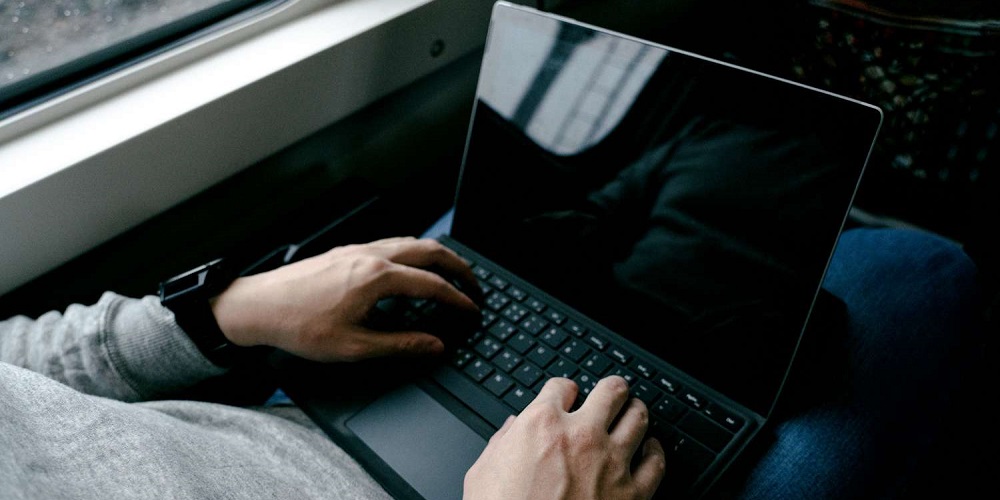
On a Windows 11 PC, a Blue Screen of Death (or BSOD) shows an error code that (in some ways) helps you study and fix a potential problem. A black screen, on the other hand, provides no information. There is no more information; it is merely black or blank. Fixing a black screen on Windows 11 requires a different troubleshooting strategy, but it is not insurmountable. If you’re experiencing black screen issues, the problem is likely hardware-related. That is also simple to fix the input display errors. Below, let’s examine how to fix a black screen on a Windows 11 PC.
Black Screen On Windows 11 Causes
Several issues may be at play when you have a black or blank screen on your Windows 11 system. For instance, compatibility issues with a GPU driver or hardware problems with the monitor, GPU, cables, or physical input ports or cables are examples of potential problems. You may use several troubleshooting techniques to fix a black screen that isn’t working.
Verify Power To Fix Black Screen On Windows 11
This option may seem basic, but the problem might be as simple as confirming that your monitor is plugged in and switched on. This option is mostly for external desktop displays and laptops linked to an external monitor through a docking station. First, verify that the power cable is properly attached to the external monitor and is plugged into a recognized cable working outlet. If it doesn’t power on, the monitor is the problem, and you’ll need to use a different one.
Check Monitor Cables & Connection
If your desktop computer or laptop is linked to an external monitor, check the cable(s) and connectors first. Then, remove the display cables, check for damage, and blow the cable input and display port out using compressed air to remove dirt and debris. Next, check to verify whether the cables are working after being replugged. Well, if it still isn’t working, try a spare cable if you have one hanging around, or borrow a known active display cable from another system. Finally, verify the security of the cable connections.
In addition to reviewing the cables, try a different one if your card has more than one output port. For instance, the output port of the graphics card may suffer damage. For instance, you could access a DisplayPort, DVI, HDMI, VGA, or Thunderbolt port. Instead, use the port that works to get by until you can further troubleshoot the GPU.
Restart PC
At times, when you turn on your PC, not all of the components receive power and start correctly. Rebooting your system is, therefore, another simple step. It would be best to do a hard reset since you have a black screen. Press and hold the power button on your PC for 10 to 15 seconds until it shuts down entirely. Press the power button to start the PC after waiting 30 to 45 seconds. Check to check whether your monitor now works and that you can view the operating system.
Check Projection Settings
You will need to check the projection settings if you have a multi-monitor arrangement. Even if you don’t, if you turn it on by accident, your primary screen may seem blank, so check it out. To check the projection settings.
1 – Press the Windows key + P shortcut.
2 – Use the arrow keys to navigate the list and attempt to find the correct setting.
Note: To switch between each mode, you may need to repeat the instructions a few times.
Disconnect External Peripheral Devices
A conflict with your display settings might result in a black screen at the boot. Next, unplug all external devices, including USB drives, cameras, printers, docking stations, and Bluetooth devices.
Remove external devices, then turn on the PC to see if the black screen is fixed. If so, plug each device back in one at a time until you identify the one causing the problem.
Reset Windows Explorer
Windows Explorer may have a problem if you get a black screen but can still move the mouse. You can reset the issue to resolve it. To reset Windows Explorer, follow these steps.
1 – To launch Task Manager on Windows 11, press Ctrl + Shift + Esc.
2 – Choose the Processes tab after Task Manager has opened.
3 – Right-click Windows Explorer in the Windows Processes section and select Restart from the context-sensitive menu.
Note that newer Windows 11 feature a Search area at the top, making it easier to find the required apps and processes.
Regardless of how you restart Windows Explorer, the black screen problem should be resolved after a brief screen blink.
Boot Windows In Safe Mode
Well, if you still have a black screen and cannot enter the operating system, boot Windows 11 in Safe Mode. On booting into Safe Mode, Windows only loads the necessary components to operate the operating system. Sound cards, graphics cards, and other components use a generic driver. Again, just enough to access Windows. You may continue debugging the black screen problem using a graphical user interface by entering Safe Mode.
After you can see the Windows 11 user interface, you may continue following the troubleshooting steps below to solve a black screen on Windows 11.
Clean Boot Windows 11
Windows starts with the necessary drivers, apps, and services, including those from the manufacturer. However, one of those components may be causing the black screen problem. Hence, a Clean Boot will start your system with fewer components.
If the black screen issue is solved after performing a Clean Boot, you will know where to start troubleshooting. To resume, re-enable one component at a time until you discover the one causing the problem and keep it disabled.
Update Graphics Card (GPU) Driver
An outdated or corrupt graphics card driver can bring on a black screen problem. However, you have a few options for fixing your GPU driver, including updating it, reinstalling it, or reverting the driver. Do the following to manage your graphics card driver.
1 – Click the Start button or press the Windows key to access the Start menu.
2 – Enter the device manager and click it under the Best match section.
3 – Open the Display adapters section and then right-click your graphics card. There are three primary options on the menu.
Update Driver – Install the most recent version of the driver for your graphics device. You may have Windows find the update automatically or manually upgrade the GPU driver.
Uninstall Device – Remove the GPU and driver. The latest stable version of the driver will then be installed on your system once you restart it.
Properties – Select this option to examine your card and revert the driver. This is useful if the black screen problem arose after you recently upgraded the GPU driver.
Restart your PC after completing the preceding steps to check if the black screen issue has been resolved. Normally, starting by updating the driver, reinstalling it, and then rolling back the driver is preferable.
Conclusion:
There is no need to fear if your PC displays a black or blank screen. It may be fixed by something simple like a lack of cable or a defective cable, or it can be fixed by using one of the options listed above to power fix. It is also vital to note that you should upgrade to Windows 11, as a fix may be a click away.










